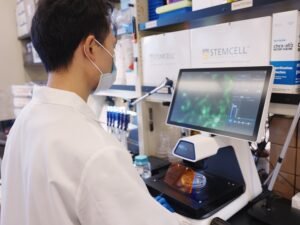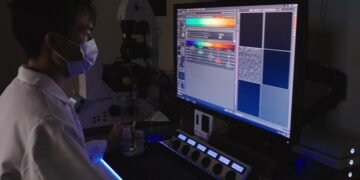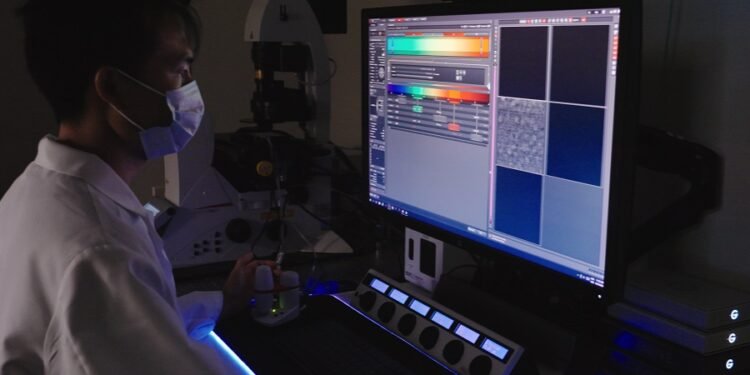Researchers at Penn State have created the first nanocomputing device from a protein (Protein-based nano-‘computers’) that works like a circuit. This step brings them closer to developing next-generation cell therapies to treat diseases such as diabetes and cancer.
Traditional synthetic biology approaches to cell therapy, such as those that destroy cancer cells or promote tissue regeneration after injury, are based on the expression or suppression of synthetic proteins.
what is needed in the cell. This method can take time (for proteins to express and degrade) and costs cellular energy in the process.
A group of researchers from Penn State College of Medicine and the Huck Institutes of the Life Sciences are taking a different approach.

“We are creating proteins that produce the desired properties directly,” said Nikolay Dokholyan, G. Thomas Passananti Professor and Vice President of Research in the Faculty of Medicine. “Our devices are made of proteins or nanocomputing agents that respond directly to stimuli (inputs) and produce desired results (outputs).”
In a study published in Science Advances today (May 26), Dokholyan and bioinformatics and genomics PhD student Jiaxing Chen explain how they create their nano-informatics. They designed a target protein by combining two sensor domains, or regions that respond to stimuli.
In this case, the target protein responds to light and a drug called rapamycin by changing its structure or position in space. To test their design, the team introduced their modified protein into living cells in culture. By exposing cultured cells to stimuli, they use tools to measure changes in cell structure when cells are exposed to stimuli from the sensor field.
Previously, their nanocomputing operator required two inputs to produce one output. Now Chen says that there are two possible outputs and the output depends on the order in which the input is received. If rapamycin is detected first, followed by light, the cell will adopt one cell cycle, but if the stimulus is received in another order, then the cell will adopt the cell cycle. separate.
Chen says the experimental proof of concept paves the way for creating more complex nanocomputing agents. “Obviously, the more input you put into a nanocomputing controller, the more it’s going to be able to come out with different combinations,” Chen said.
“Inputs may include physical or chemical stimulation and outputs may include changes in cell behavior, such as cell orientation, migration, altered genes, and cytotoxicity of immune cells against cancer cells.”
The team plans to advance its nanocomputing capabilities and test various applications of the technology. Dokholyan, a researcher at the Penn State Cancer Institute and the Penn State Neuroscience Institute, said that their idea could one day be the basis of the next gene therapy for various diseases, such as autoimmune diseases, viral diseases, diabetes. , nerve damage and diabetes. cancer.
Source: Penn State





































